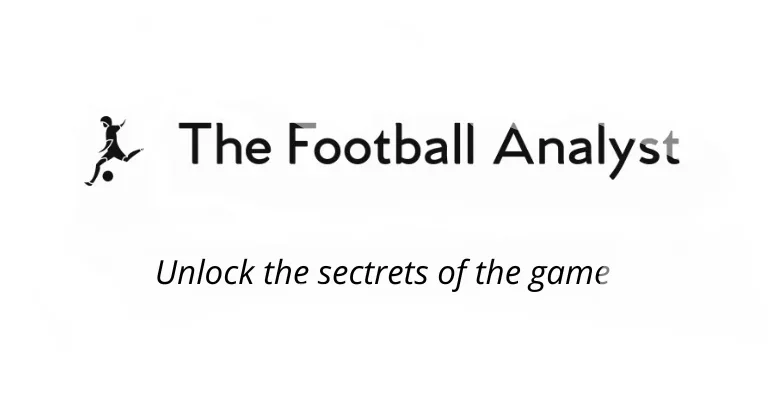Modern football scouting goes far beyond identifying players who simply “play in a position.” Instead, the focus is on positional profiles — detailed, role-specific templates that describe the exact attributes a club requires for each position within its playing model.
Two players may both be labeled “right-back,” yet one could be a wide runner constantly overlapping in the final third, while the other operates almost exclusively in a deep, inverted build-up role. Without understanding these nuances, scouts risk recommending players who are fundamentally unsuited to a team’s tactical identity.
What Is a Positional Profile?
A positional profile is a detailed description of the physical, technical, tactical, and psychological qualities needed for a specific role within a specific system.
It is not a generic checklist. Instead, it’s an applied scouting tool rooted in the club’s game model and coaching philosophy.
Example:
- A high-pressing 4-3-3 side may want its central forward to be an aggressive presser with explosive acceleration, capable of attacking space behind the defensive line.
- A possession-oriented 4-2-3-1 might require the same position to excel in link-up play, combining in tight areas, and sustaining attacks rather than constantly running in behind.
Both players are “strikers,” but their positional profiles are completely different.
Why Positional Profiles Matter in Scouting
Without a clearly defined profile, recruitment becomes guesswork. Scouts may identify technically gifted players who simply cannot execute the tactical demands of the role. This often leads to expensive signings that don’t fit the system, wasting both financial and developmental resources.
Key benefits of using positional profiles:
- Alignment with the game model – Ensures every signing can perform the role as the coach intends.
- Clearer evaluation criteria – Scouts know exactly which qualities to prioritise.
- Reduced recruitment risk – Minimises the chances of tactical misfit signings.
- Efficient shortlisting – Profiles act as a filter, quickly narrowing the scouting pool.
Breaking Down the Four Core Categories
1. Physical Attributes
The role dictates the physical requirements, not the position name.
- Example: A wing-back in a 3-4-3 requires extreme stamina and repeated sprint ability to cover the length of the flank.
- Example: A centre-back in a deep defensive block may not need the same top-end pace as one playing in a high line, but aerial dominance becomes a higher priority.
When scouting, note not just raw physical qualities but also how they are expressed in match situations — is the player’s speed sustained across repeated efforts, or is it purely over short bursts?
2. Technical Qualities
Technical demands are equally role-specific.
- A deep-lying midfielder in a possession system needs press resistance, scanning habits, and the ability to play vertical passes under pressure.
- A ball-winning midfielder in a transitional side might place less emphasis on creative passing and more on intercepting and distributing simply.
The key is to connect the player’s technical skillset to the tactical context they will be placed in.
3. Tactical Intelligence
Even technically gifted players can fail if they lack the decision-making or positional discipline the role requires.
Tactical intelligence covers:
- Positioning: Does the player occupy the right zones during each phase?
- Role understanding: Do they execute their responsibilities without compromising team structure?
- Adaptability: Can they adjust positioning based on the opponent’s setup?
Scouts should focus on repeated patterns of behaviour — one good decision doesn’t define a player, but consistent habits do.
4. Psychological and Behavioural Traits
This is the most under-discussed but often decisive factor in fitting a positional profile.
- Mental resilience, leadership, and ability to follow tactical instructions all influence how well a player performs in their role.
- For pressing forwards, for example, work rate and willingness to chase lost causes are non-negotiable traits, regardless of technical quality.
Interviews, background checks, and on-pitch behaviour can all help assess these traits.
Practical Example – The Inverted Fullback
Let’s take the modern inverted fullback role as an example of how a positional profile applies:
Physical: Agility for sharp inside movements, acceleration to recover defensively.
Technical: Secure short passing, ability to receive on the half-turn, and progression through midfield zones.
Tactical: Understanding of central midfield positioning, timing of inversion relative to the team’s build-up shape.
Psychological: Patience in build-up, discipline to maintain structure, and composure under pressing.
If a club’s game model requires their fullback to invert during build-up, a scout evaluating purely “defensive fullbacks” will repeatedly miss suitable candidates.
Common Mistakes in Using Positional Profiles
- Copying another club’s profile – What works for Manchester City may fail in a mid-block, counter-attacking side.
- Making the profile too generic – Vague traits like “good passer” or “fast” don’t help in decision-making.
- Ignoring future development – Some attributes can be trained, others are harder to develop; scouts must distinguish between the two.
Conclusion
Positional profiles are the link between a team’s tactical blueprint and its recruitment strategy.
They transform scouting from talent spotting into role-specific problem-solving, ensuring every new signing can execute the demands of the coach’s system. For clubs, coaches, and scouts, mastering this concept isn’t optional — it’s the foundation of building a coherent, competitive squad.
